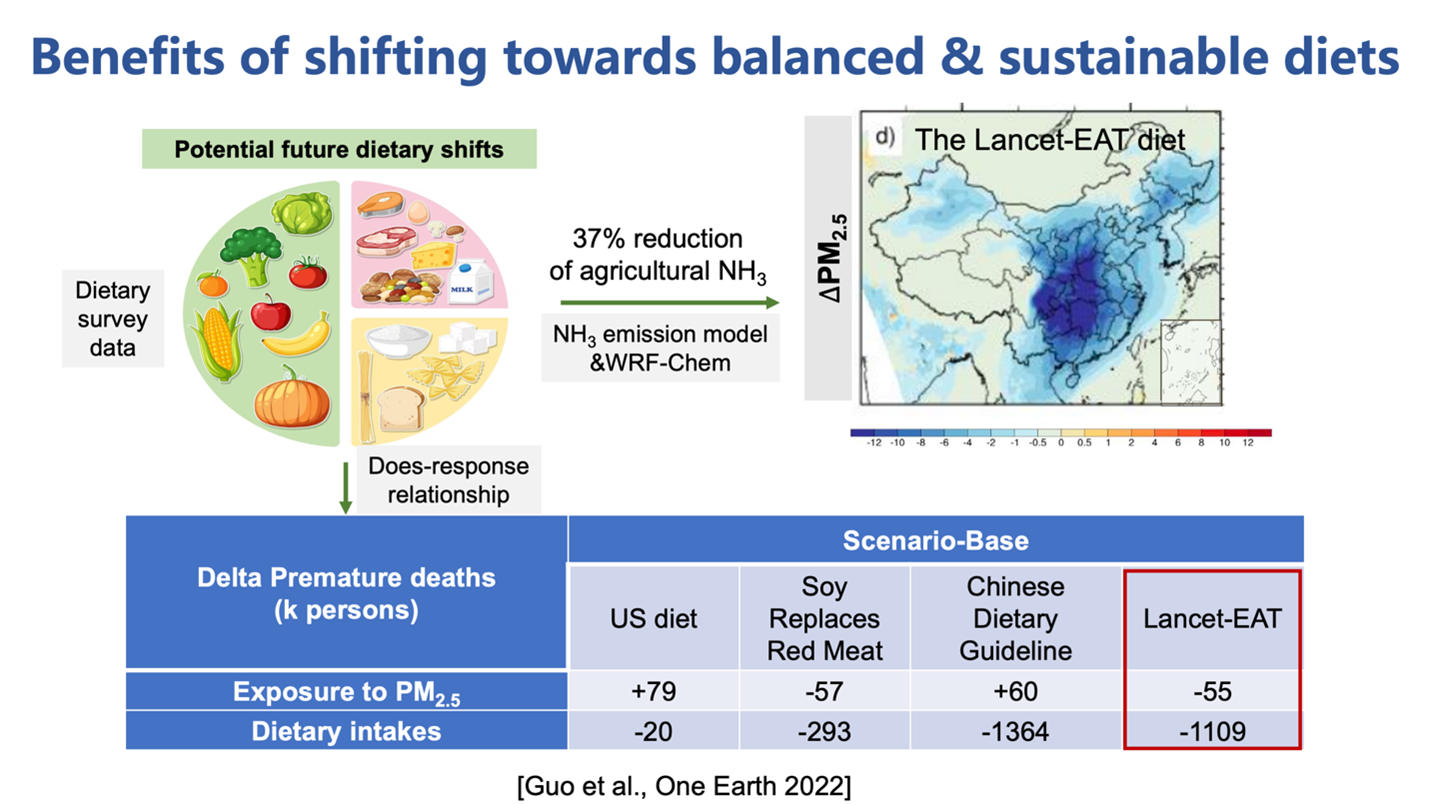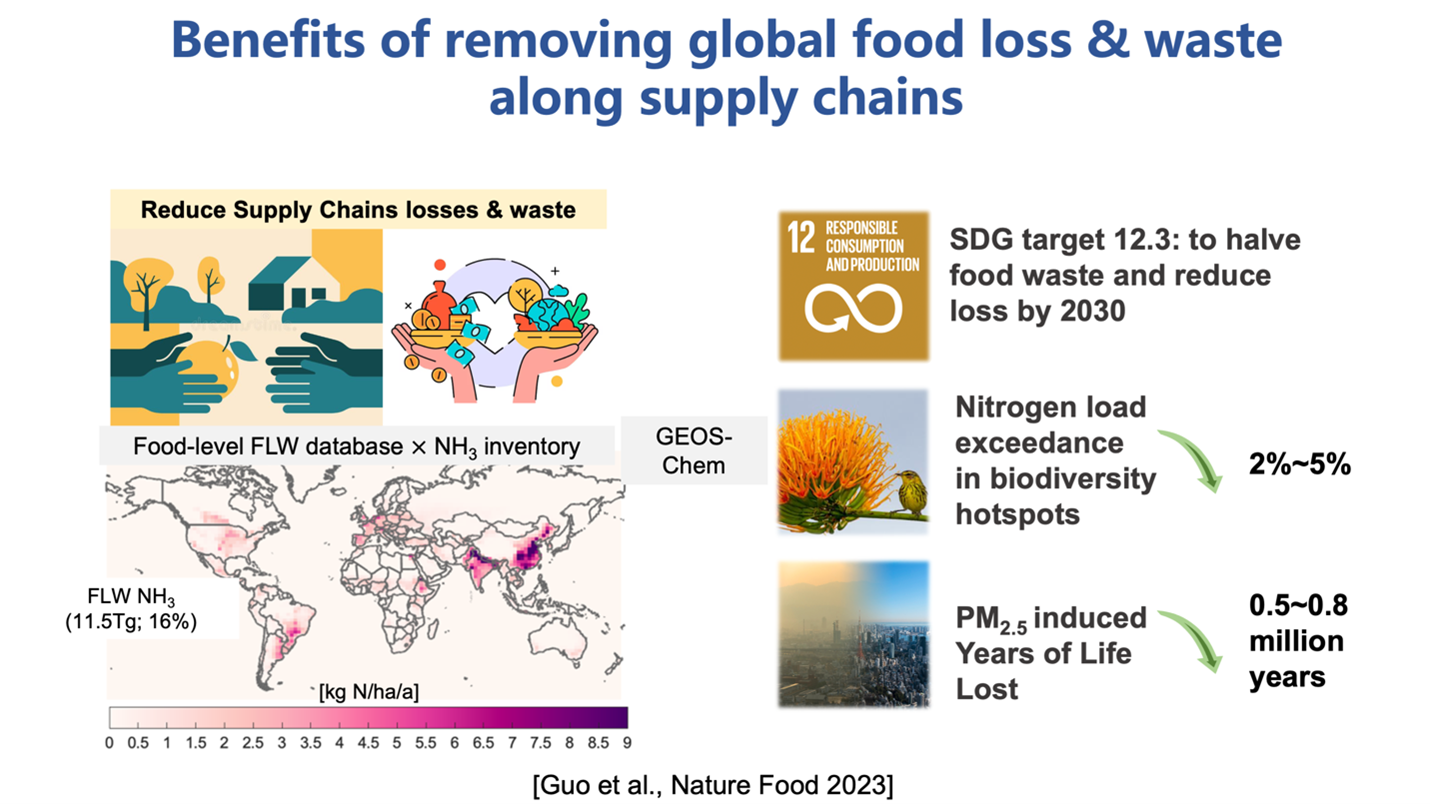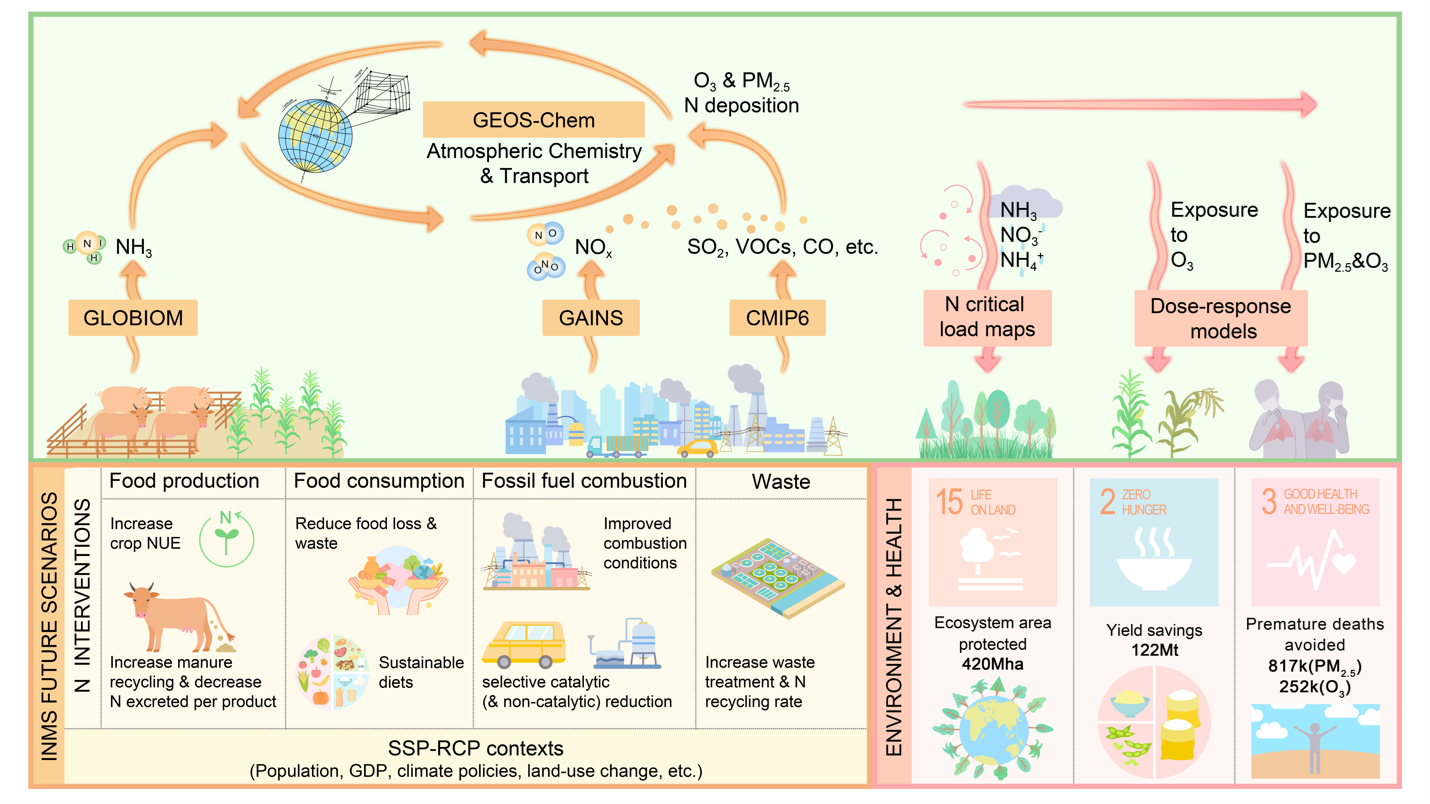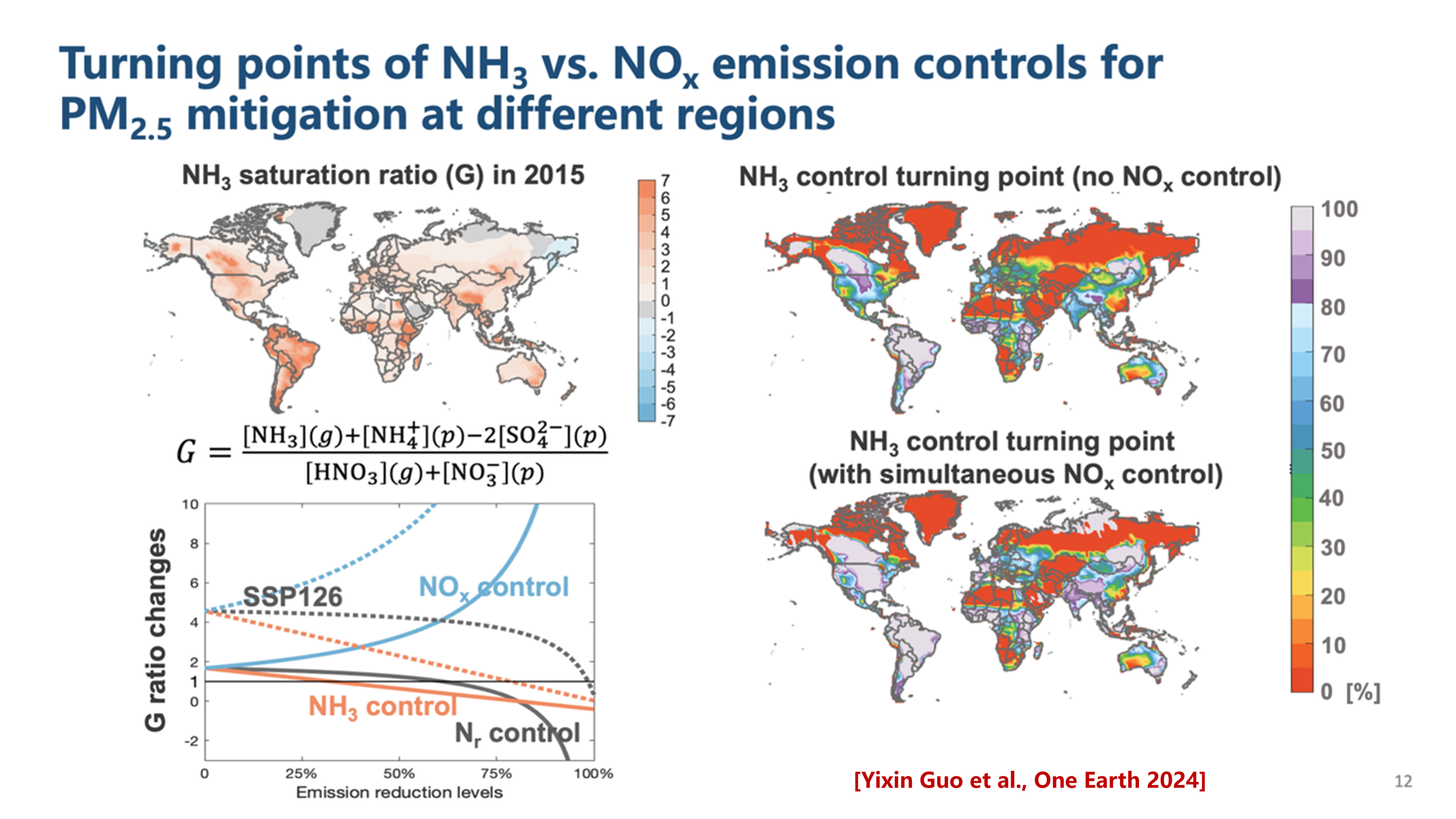Research

Benefits of improving agricultural N management in China
Ammonia (NH3) emissions contribute substantially to secondary inorganic aerosol formations in PM2.5. Relatively poor agricultural nitrogen management in China, has led to high NH3 emissions from agricultural fields, as well as nitrogen water pollution, N2O emissions and low nitrogen use efficiency. Combining agronomic data, process-based emission models & atmospheric chemistry model, Guo et al. Nature Food 2020 finds that easy-to-implement agricultural management practices can reduce agricultural NH3 emissions in China by 34%, while mitigating PM2.5 air pollution, increasing crop yields and reducing nitrogen water pollution and climate impacts. Total benefits valued at $30 billion/a exceed costs of $18 billion/a. Policy implications are there exist strong synergies for China’s clean air, climate and high-efficiency high-yield agricultural policies.

Benefits of shifting towards balanced & sustainable
Dietary structure drives agricultural production and associated environmental damages. During the past decades, Chinese diets have shifted towards more resource-intensive diets and we also face rising premature deaths attributable to dietary risks. Combining dietary surveys, atmospheric chemistry models and life cycle analyses, Guo et al. One Earth 2022 examines four potential future Chinese dietary shifts and their implications for agricultural NH3 emissions and PM2.5 levels, greenhouse gas emissions, water footprints and human health impacts associated with dietary intakes and exposure PM2.5. Complex trade-offs in various environmental and health objectives embedded in dietary changes are unveiled.

Benefits of removing global food loss & waste along supply chains
From a food system perspective, 1/3 of global food production is lost during post-harvesting, storage, transportation, retail and consumption processes. Food loss & waste (FLW) represent resources wasted and opportunities lost to secure food supply. Combining latest FLW database, food-level agricultural NH3 emission inventory, and atmospheric chemistry models, Guo et al. Nature Food 2023 found that global FLW were associated with 16% anthropogenic NH3 emissions, and addressing FLW provides overlooked benefits for improving PM2.5 air quality, mitigating excess nitrogen deposition to sensitive ecosystems, thus benefiting human and ecosystem health. Synergies among multiple sustainable development goals are emphasized, including Responsible Consumption and Production, Human health and wellbeing, Life on Land, etc.

Aspirational nitrogen interventions accelerate air pollution abatement and ecosystem protection
Energy and food production, essential to human wellbeing, generate reactive nitrogen emissions including (NOx, N2O, NH3, etc). Guo et al. Science Advances 2024 combined integrated assessment models, atmospheric chemistry transport models, dose-response relationships and explored opportunities of implementing additional nitrogen specific policies for improving future air quality and ecosystem health. Maximum technical/policy feasible mitigation potentials of agricultural NH3 and anthropogenic NOx emissions have been assessed. The role of managing nitrogen for improving future global PM2.5 & O3 air quality, mitigate nitrogen deposition, thus protecting human, crop and ecosystem health has been emphasized.

Ambitious nitrogen abatement is required to mitigate future global PM2.5 air pollution towards the World Health Organization targets
With ongoing climate mitigation efforts, the role of reactive nitrogen in future PM2.5 formation becomes complicated by changing interactions with other air pollutants. Guo et al One Earth 2024 provides a modeling analysis and demonstrates that with clean energy transitions, deeper ammonia controls are required to be effective for PM2.5 mitigation, while the effectiveness of nitrogen oxide controls is unaffected. The later NH3 controls are installed, the deeper the required reductions will be to be effective, although for many regions such levels are still within technical feasibility, while NOx controls will always remain effective. These insights provide an important guide to ensure that clean air policies are as efficient as possible.

Summertime Urban Ammonia Emissions May Be Substantially Underestimated in Beijing, China
Urban NH3 emission quantifications include a great deal of uncertainties. Xu, Lu, Guo* ES&T 2023 explored reasons for severe WRF-Chem model underestimations of NH3 concentrations in Beijing in August 2018, including simulated gas-particle partitioning, meteorology, regional transport, and emissions, using updated spatially refined (3 km resolution) NH3 emission estimates in the agricultural sector for Beijing-Tianjin-Hebei and in the traffic sector for Beijing. We find that simulated NH3 concentrations are significantly lower than ground-based and satellite observations during August and both agricultural and non-agricultural NH3 emission totals in Beijing shall increase by ∼5 times to match the observations. Our research demonstrates the need of locating missing emission sources for urban NH3 and increasing efforts for validating inventories and simulated NHx.
